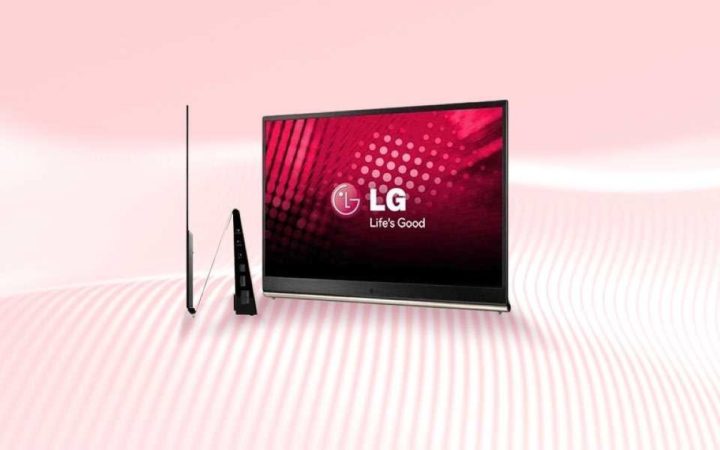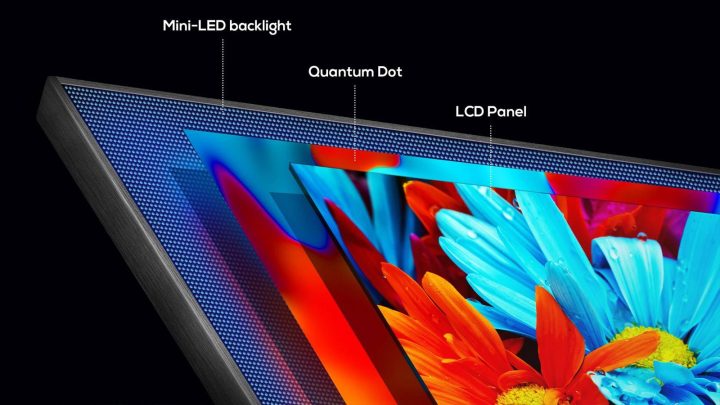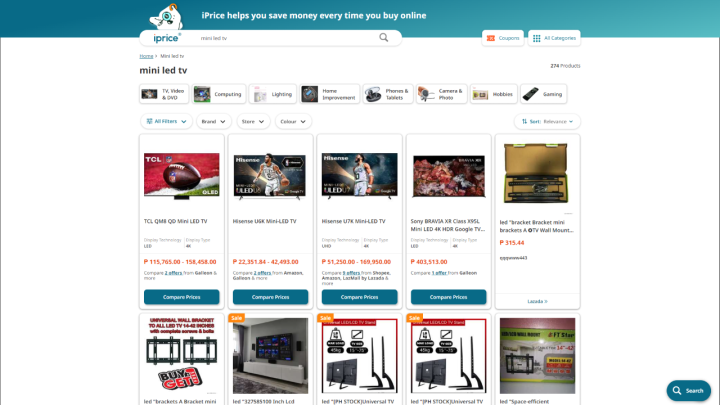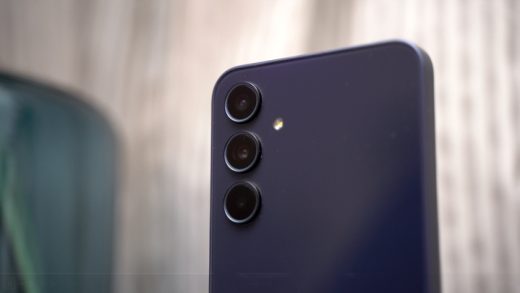The television landscape is constantly evolving, with new technologies emerging that promise sharper visuals, deeper blacks, and vibrant colors. But navigating this ever-expanding sea of options can be confusing for consumers, especially when it comes to the type of display panel they should choose.
Three major contenders dominate the market: QLED, OLED, and mini-LED. Each boasts its own set of advantages and disadvantages, making the decision far from straightforward.
Thus, this article will delve into the pros and cons of these three TV display panels, helping you make an informed decision. Let’s dive in.
Table of Contents
QLED
Starting with QLED, which stands for Quantum Dot Light-Emitting Diode. It has become a popular buzzword in the TV market, but what exactly is it? At its core, it’s essentially an upgraded version of traditional LCD (Liquid Crystal Display) technology.

Image/ TCL
The key difference lies in QLED’s thin layer of film containing nanocrystals called “quantum dots.” These dots act like tiny color filters, enhancing the light from the LED backlight to produce a wider range of colors. Just imagine millions of red and green nanocrystals working together to refine the light and create purer, more vibrant hues.
In simpler terms, this translates to richer and brighter colors compared to standard LCD TVs, offering a picture closer to the renowned color and contrast of OLED technology. However, it’s crucial to note that it doesn’t quite reach the same level.

2017 Samsung QLED TV
It’s worth mentioning that Samsung took the lead in introducing QLED TVs in 2017 with their Q-Series line. Since then, the technology has been adopted by other manufacturers, establishing it as a prominent choice for consumers looking for an upgrade over traditional LCD TVs.
OLED
Similar to its presence in smartphones, OLED technology has also found its way onto TVs, offering a distinct viewing experience. Unlike QLED, which relies on a backlight, OLED (a.k.a. Organic Light-Emitting Diode) takes a different approach by making each pixel self-illuminating. This enables individual pixel control, resulting in deeper blacks and unmatched contrast ratios.

Additionally, OLED boasts faster response times, significantly reducing motion blur, ensuring smooth and clear visuals even in fast-paced action sequences. The technology also allows for thinner and lighter panels due to the absence of an LED backlight, leading to lower power consumption.
LG pioneered the development of OLED technology for TVs, celebrating a decade of innovation in 2023. Since then, other major brands like Sony and Samsung have also adopted the technology, offering consumers a diverse range of OLED TV options.

LG 15-inch 15EL9500 OLED TV released in 2012 | Image/ LG
Mini LED
Mini LED, as the name suggests, utilizes thousands of miniature LEDs (microns in size) in its backlight. This allows for significantly more precise dimming zones compared to traditional LED TVs, which typically use hundreds of LEDs. This translates to improved contrast and potentially deeper blacks compared to those TVs.

Image/ TCL
Mini LED displays offer richer colors and better contrast control thanks to the sheer number of smaller LEDs packed into the backlight. While not achieving the perfect blacks of OLED due to the backlight setup, mini-LED represents a significant improvement over QLED in this area.

Image/ TCL
TCL holds the credit for pioneering mini-LED technology in TVs with their 2019 XL collection launch — whereas the latest 2023 collection utilize quantum dot technology, simply called QD-mini LED (but that’s another topic to delve into). Apple has also adopted mini-LED in some of their higher-end products, like the 2023 16-inch MacBook Pro.

QD-Mini LED | Image/ TCL
Mini LED display technology is fairly new in the scene and generally costs more than OLED TV options. However, as the technology develops, it is expected to be much more affordable in the future than it is today.
QLED vs OLED vs mini-LED
QLED pros and cons
While QLED often comes at a more attractive price point compared to OLED and mini-LED, its lower cost reflects some trade-offs in performance. One of the key advantages of QLED is its brightness. QLED panels can achieve higher peak brightness levels especially in the budget segment as compared to OLED options. This makes them ideal for well-lit rooms or showcasing HDR content.
For example, the 55-inch TCL can reach up to 2,000 nits of peak brightness, whereas the LG C3 OLED TV can only reach 800 nits.
However, this brightness comes at the expense of deeper blacks. Unlike OLED with its self-illuminating pixels, QLED relies on a backlight, leading to light bleed and ‘blooming’ effect, where bright areas appear to halo into darker ones.

Blooming effect on the Samsung Class Q7F QLED TV | Image from Samsung Community
Because of this, QLED also has viewing angle limitations, with colors and contrast shifting when viewed from off-center angles.
While not as susceptible as OLED, QLED panels are still not entirely immune to burn-in. Prolonged static images can leave permanent ghosting on the screen. Furthermore, QLED has slower response times which leads to potential motion blur in fast-paced scenes.
Lastly, since QLED uses backlight, it will consume more electricity compared to OLED with its self-illuminating pixels.
OLED pros and cons
OLED panels have garnered praise for their exceptional picture quality and unmatched contrast ratios, offering several distinct advantages. OLED can achieve nearly infinite contrast ratios thanks to self-illuminating pixels, meaning perfect blacks and incredibly vibrant colors. This translates to a more immersive viewing experience, especially noticeable in darker scenes.
OLED boasts incredibly fast response times, virtually eliminating motion blur in fast-paced content, making it ideal for sports or action film enthusiasts. The LG G3 OLED TV mentioned earlier only has 0.1 milliseconds response time which is significantly faster than QLED (2-8 milliseconds) or mini LED TVs (1-4 milliseconds on average). Its contrast ratio is at 1,517,778:1 in HDR10.

LG G3 OLED TV 65-inch | Image/ LG
Viewing angles are also excellent, with minimal color or contrast shift even when viewed from off-center positions.
OLED panels are generally considered more energy-efficient due to their individual pixel control, consuming less power compared to other backlit technologies.
However, OLED technology isn’t without its drawbacks — the biggest concern is burn-in. This could be problematic for viewers who watch static content like news channels frequently.

Samsung Class Q7F QLED TV burn-in damage after seven years of usage | Image/ peterspliid (via Reddit)
Additionally, while improving, OLED panels generally struggle to achieve the same level of peak brightness as QLED, making them less suitable for brightly lit rooms or HDR content.
Perhaps the biggest hurdle for many consumers is its price point. OLED technology comes at a premium, making OLED TVs significantly more expensive than their QLED counterparts.
Mini LED pros and cons
Mini LED, the newest contender in the TV display arena, promises improved picture quality and performance, but it’s still a young technology with both potential and limitations.
On the bright side, mini-LED offers impressive contrast. By using thousands of tiny LEDs instead of hundreds in traditional LED TVs, it achieves deeper blacks and richer colors, approaching the levels of OLED. This translates to a more immersive and visually striking experience, especially in dark scenes.
Mini LED also boasts excellent brightness, similar to QLED, making it suitable for various lighting conditions and HDR content. Take the TCL QM89 115-inch Mini-LED TV for example, it can reach up to a whopping 5,000 nits.
Another potential advantage is affordability. As the technology matures, mini-LED TVs are expected to become more budget-friendly, potentially offering a more cost-effective alternative to OLED in the future. Mini-LED TVs are also generally considered more energy-efficient than traditional LED models due to their improved backlight technology.
Of course, mini-LED also comes with significant drawbacks. Currently, the availability of mini-LED TVs is limited, offering fewer options compared to established technologies like QLED and OLED. This restricts consumer choice and makes it harder to find the perfect fit.
Furthermore, picture quality can be inconsistent. The way mini-LEDs are clustered can create uneven lighting, leading to distracting ‘blooming’ effect or halos around bright objects against dark backgrounds — similar to QLED since the presence of backlight.
Another hurdle is the price point. Today, mini-LED TVs are still significantly more expensive than traditional LED models, making them a less accessible option for many consumers. Searching through iprice.ph, only four options appeared with the most expensive being the Sony BRAVIA XR Class X95L Mini LED TV selling for a staggering Php400K.

Finally, mini-LED technology is still in its early stages. Its long-term reliability and performance are yet to be fully established, raising concerns about potential issues down the line. Despite improvements over traditional LED, mini-LED TVs require significant energy to operate, raising questions about their overall energy efficiency.
| Feature | QLED | OLED | Mini LED |
|---|---|---|---|
| Technology | Quantum dot LED (LED backlight + quantum dot layer) | Organic light-emitting diode (self-illuminating pixels) | Miniaturized LEDs for backlight |
| Contrast Ratio | 10,000:1 to 1,000,000:1 (variable based on model) | 1,000,000:1 to ∞ (infinite) | 10,000:1 to 10,000,000:1 (variable based on model) |
| Black Levels | Very deep, but not perfect | Perfect (pixels can turn off completely) | Deep, potentially deeper than QLED with precise dimming |
| Brightness | Up to 4,000 nits | 500 to 800 nits 1000+ nits (on higher-end models) | Up to 5,000 nits |
| Viewing Angles | Good, but colors may shift slightly at extreme angles | Excellent, minimal color shift even at wide angles | Good, similar to QLED |
| Response time | 2–8 milliseconds | 0.1 milliseconds | 1-4 milliseconds |
| Burn-in Risk | Almost none | High possibility with static images displayed for extended periods | Potentially lower than OLED due to smaller LEDs |
| Price range (approx.) | Php20,000 to Php50,000 | Php50,000 to Php200,000 | Php50,000 to Php300,000+ |
Which one to get?
It all boils down on your priorities and budget. If you’re on a tight budget and want a bright TV for your living room, QLED is a good option. If you’re a movie buff who demands the best picture quality and don’t mind spending more, OLED is king. And if you’re looking for something new and promising with the potential to be more affordable in the future, mini-LED could be worth considering, but be aware of its limitations.
Remember, the best way to choose is to see them in action yourself! Visit your local electronics store and compare them side-by-side under different lighting conditions to find the TV that best fits your needs and preferences.
























